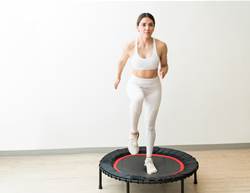Traditional pregnancy exercise advice has largely focused on foetal safety, but new guidelines from the Women’s Health Education Network (WHEN) are shifting the conversation. The WHEN Pregnancy Exercise Guidelines emphasise not just the immediate safety of the baby, but the long-term musculoskeletal and pelvic health of women—before, during and after pregnancy.
“For too long, pregnancy exercise guidelines have prioritised protecting the baby while overlooking the lasting impact on the mother’s body,” says WHEN CEO & Founder, Peta Titter. “We want women to have access to clear, evidence-based information that empowers them to make informed decisions about their own health.”
Why These Guidelines Matter
There’s a major gap in research on how pregnancy-related changes affect a woman’s long-term health. Most studies focus on foetal well-being, leaving many women in the dark about how exercise choices during pregnancy can influence their pelvic floor health, joint stability, and future physical function.
The WHEN guidelines, developed by obstetricians, gynaecologists, physiotherapists, exercise physiologists and psychologists, aim to fill this gap by offering practical, research-backed advice. While they do not replace recommendations from established bodies like the Royal Australian and New Zealand College of Obstetricians and Gynaecologists (RANZCOG), the American College of Obstetricians and Gynecologists (ACOG) and the World Health Organization (WHO), they complement these by addressing often-overlooked concerns.
Pregnancy Exercise Recommendations for Long-Term Health
- Avoid lying flat after the first trimester—Supine positions can reduce blood flow and cause dizziness.
- Minimise high-risk balance activities—Standing on moving equipment or performing weight-bearing single-leg exercises can increase fall risks, particularly without supervision.
- Prioritise pelvic health—Pelvic girdle pain (PGP) is common, and exercises should focus on symmetry and core engagement rather than high-impact movements that may cause discomfort.
- Be mindful of weightlifting—Lifting over 15kg can strain the pelvic floor and joints, though moderate resistance training is beneficial.
- Running is a personal choice—There’s limited research on the long-term impact of running during pregnancy, so modifications may be necessary.
Empowering Women Through Information
One of the biggest goals of these guidelines is transparency. Many women are left wondering what’s safe and what’s not, often receiving conflicting advice from different sources. The WHEN guidelines provide a clear framework so women can confidently choose exercises that align with their personal health goals—without unnecessary fear or misinformation.
“Pregnancy is a transformative time with lasting effects on a woman’s body,” says Titter. “Women deserve full access to information so they can make the best decisions, not just for their pregnancy but for their future well-being.”









